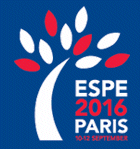
55th Annual ESPE
Paris,
France
10 Sep 2016 - 12 Sep 2016
Rapid Free Communications
Pituitary
hrp0086rfc3.1 | Pituitary | ESPE2016
Endocrinopathy in Childhood Intracranial Germ Cell Tumours is Predicted by Disease Location not Treatment: 30 year Experience from a Single Tertiary Centre
Serra-Caetano Joana , Dimitrakopoulou Eftychia , Ederies Ash , Phipps Kim , Spoudeas Helen Alexandra
hrp0086rfc3.2 | Pituitary | ESPE2016
Subfertility After Chemotherapy in PNET Tumours: 34 year Experience from a Single Centre (1980–2013)
Serra-Caetano Joana , Pandalai Soumya , Phipps Kim , Spoudeas Helen Alexandra
hrp0086rfc3.3 | Pituitary | ESPE2016
Unraveling the Link between Optic Nerve Hypoplasia and Pituitary Hormone Dysfunction
Alyahaywi Naseem , Dheenshaw Kiera , Aroichane Maryam , Islam Nazrul , Amed Shazhan
hrp0086rfc3.4 | Pituitary | ESPE2016
Children and Adolescents with Severe TBI can Develop Late Pituitary Dysfunction Independently of the Results of the First Pituitary Evaluation
Dassa Yamina , Claire Personnier , Helene Crosnier , Mathilde Chevignard , Marie Bourgeois , Magali Viaud , Michel Polak
hrp0086rfc3.5 | Pituitary | ESPE2016
Prospective Dynamic Evaluation of Hypothalamo-Pituitary Function in 30 Cases of Paediatric Craniopharyngioma, by Hypothalamic Injury and Treatment; A Single Centre Series
Guzzetti Chiara , Losa Laura , Improda Nicola , Pang Gloria , Phatarakijnirund Voraluck , Gan Hoong-Wei , Hayward Richard , Aquilina Kristian , Ederies Ash , Spoudeas Helen A.
hrp0086rfc3.6 | Pituitary | ESPE2016
Priority Target Conditions of Growth-Monitoring in Children: Toward Consensus
Scherdel Pauline , Reynaud Rachel , Pietrement Christine , Salaun Jean-Francois , Bellaiche Marc , Arnould Michel , Chevallier Bertrant , Carel Jean-Claude , Piloquet Hugues , Jobez Emmanuel , Cheymol Jacques , Heude Barbara , Chalumeau Martin
hrp0086rfc3.7 | Pituitary | ESPE2016
Pituitary Structural Abnormalities in Idiopathic Isolated Growth Hormone Deficiency
Cardoso Luis , Vicente Nuno , Dias Ines , Caetano Joana Serra , Cardoso Rita , Dinis Isabel , Bastos Margarida , Rodrigues Dircea , Carrilho Francisco , Mirante Alice
hrp0086rfc3.8 | Pituitary | ESPE2016
Anthropometric and Endocrine Features in Children and Adolescents with Type 1 Narcolepsy
Ponziani Virginia , Gennari Monia , Pizza Fabio , Balsamo Antonio , Bernardi Filippo , Plazzi Giuseppe



